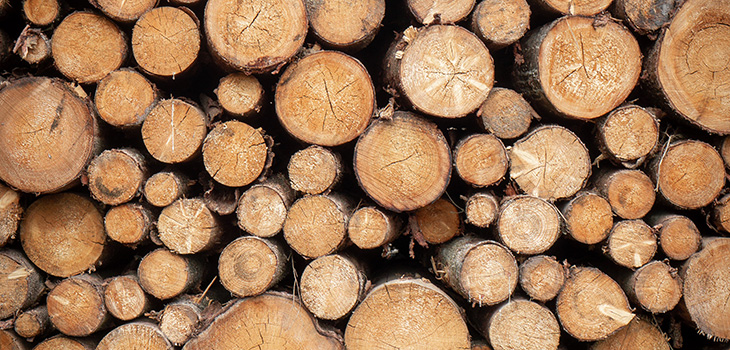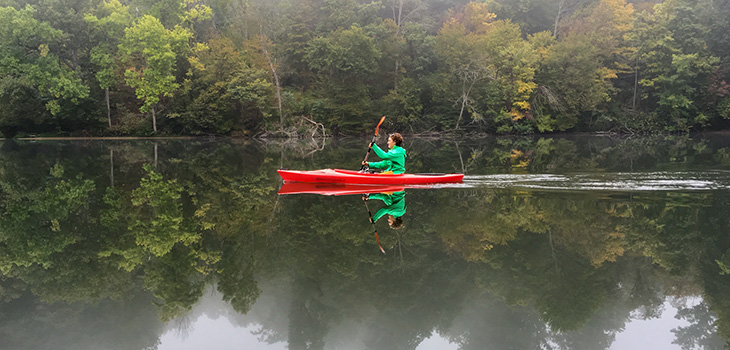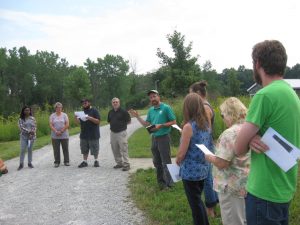 Students in Merry Lea’s Agroecology Summer Intensive (ASI) not only learn to grow things; they also work at communicating their learnings to others. As the 2017 ASI drew to a close, they presented projects on topics such as composting, weed management and pastured chickens in a public forum open to community members.
Students in Merry Lea’s Agroecology Summer Intensive (ASI) not only learn to grow things; they also work at communicating their learnings to others. As the 2017 ASI drew to a close, they presented projects on topics such as composting, weed management and pastured chickens in a public forum open to community members.
Presentations took place outdoors at the Merry Lea Sustainable Farm in areas appropriate to the topic. Local farmers whose operations the group had visited on field trips were invited to attend. Their feedback and comments added depth to the dialog.
Standing in the orchard, Emily Dobson, a Christian ministry and intercultural studies major at Bethel College, Mishawaka, Ind., presented information on the costs required to keep a flock of laying hens. Merry Lea’s egg mobile is stationed around fruit trees so that the hens can eat harmful grubs and fertilize the trees.
Dobson sparked discussion when she suggested that backyard chickens were a way to address food insecurity in Noble County. One listener asked about forages that might reduce the need for high cost organic feed while another wondered if those most in need had the necessary land.
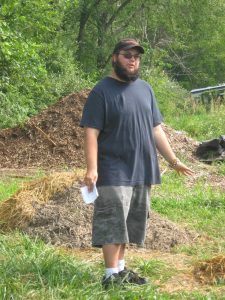 Brock Sell, also an intercultural studies major at Bethel College, offered an international perspective on composting. Sell has worked in Tanzania, expects to visit Malawi in the fall and is planning a future in agricultural ministry in Africa. How does one compost in monsoon climates? Sell constructed a compost heap to demonstrate a method he read about. To protect the pile from too much moisture or drying out, he applied a clay-like mixture as an alternative to a plastic tarp.
Brock Sell, also an intercultural studies major at Bethel College, offered an international perspective on composting. Sell has worked in Tanzania, expects to visit Malawi in the fall and is planning a future in agricultural ministry in Africa. How does one compost in monsoon climates? Sell constructed a compost heap to demonstrate a method he read about. To protect the pile from too much moisture or drying out, he applied a clay-like mixture as an alternative to a plastic tarp.
“Composting is an ancient strategy that is part of the very beginning of agriculture,” Sell said. A history fan, he peppered his talk with composting tidbits from the Talmud and George Washington.
Jess Raffel, a Goshen College student majoring in environmental science, moved the group to the kitchen garden for her presentation on integrated weed management (IWM). This approach uses multiple strategies–physical, biological and cultural–rather than depending solely on chemical interventions. When a listener asked what Raffel had learned about mulching, she was able to demonstrate how a bark chip mulch with a high carbon content had affected a patch of herbs nearby.
She also pointed out areas of the garden where the presence of particular weeds indicated soil problems. Thistles suggested soil compaction, she said, and purslane may be a sign of too much nitrogen.
“Food and people are my big passions,” says Jenny Nelson, a sustainable development major from Taylor University. For Nelson’s presentation, the group hiked to the farm’s five acres of woody perennial polyculture where nut trees, fruit trees and brambles grow together and three Belted Galloway cows graze between the rows. Nelson discussed the integration of animals into this system–a first in 2017. Nelson marveled at the ability of a cow’s rumen to turn grass into energy humans can use.
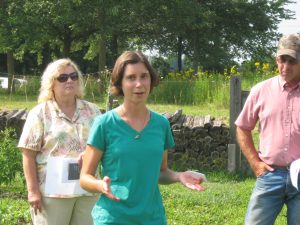 Onlookers were curious why the cows were kept in relatively small areas and moved frequently rather than left to roam freely. Nelson explained that this encouraged the cows to eat all the plants in an area rather than leaving less favored species to dominate. They also distribute their manure more thoroughly this way.
Onlookers were curious why the cows were kept in relatively small areas and moved frequently rather than left to roam freely. Nelson explained that this encouraged the cows to eat all the plants in an area rather than leaving less favored species to dominate. They also distribute their manure more thoroughly this way.
The dialog concluded over brick oven pizza at Merry Lea’s Farmstead Site.

